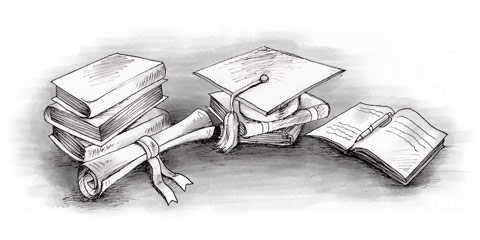If you intend to send your child to a public school, you should make enquiries about the quality of local schools before deciding where to live. Generally, the more expensive the properties in a neighbourhood, the better the local public schools. Often you can estimate the quality of a neighbourhood’s school simply by driving around town or checking the cost of property in the local papers.
Because public education is largely locally funded (from property taxes), schools in wealthy areas are much better funded than schools in poor areas, such as inner-city and rural farming communities. Similarly, spending on education per student in the poorer states is less than half that in the wealthier states. The equipment available in affluent schools often includes educational television (TV), electronic and portable language laboratories, slides and viewers, and expensive computer systems.
On the other hand, poorer schools often have a lack of basic supplies and equipment such as desks, lockers, books, general supplies, cafeteria facilities or gym equipment. Under the local funding system, the democratic ideal of providing equal education for all citizens is simply impossible to satisfy (equal opportunity is available to all Americans, provided they can afford to pay for it!). In many states, courts have ruled that over-reliance on local property taxes short changes poor districts and have compelled states to spend more on education and to spread the money evenly.
Some poor neighbourhoods in large cities have so-called ‘magnet’ elementary and high schools, whose superior curriculum (or special-emphasis programmes) and high academic standards attract students from a wide area. Other areas may have a select high school admitting students on the basis of high grades and test scores. Some public high schools specialise in a particular field of study such as science, maths, dance, music, drama, technology or vocational skills, where the teachers are trained specialists and student admissions are based on test results and achievements. On the other hand, most public schools lack extra programmes and have only a limited number of special teachers and tutors.
Discipline, drugs and violence
Foreign parents are often shocked at the apparent lack of discipline in many American public schools, although this may be largely due to the more relaxed atmosphere (of the country as a whole). Absenteeism is a huge problem in some (usually poor inner-city) schools, as is lateness for class (tardiness). This has led some authorities to make parents responsible for their children attending school and parents have been fined, had their welfare payments cut, been ordered to do community service, and even been jailed in some states for their children’s truancy. Most schools periodically review attendance records and notify parents when students miss classes.
In the worst inner-city schools, drugs and violence are commonplace and arguments and fights are likely to be decided by knives or even guns. Violence by students against teachers is also common. At tough schools, students are routinely frisked for weapons, and metal detectors are used to dissuade students from bringing weapons to school. Some inner city schools resemble prisons with pupil identity cards, resident armed guards and police, high fences and locked exits during school hours. Under a new law, students who bring guns to school face a mandatory one-year suspension and are charged with possession of a firearm on school property. A number of schools throughout the country have had considerable success with a new programme whereby they offer rewards to students who (anonymously) report fellow students who bring guns or drugs to school.
Quality of public schools
The quality of public schools varies considerably from state to state and community to community; although some are dreadful, many are excellent. Many communities take pride in the quality of their local public school system (which is crucial in maintaining property values); where schools are well run, well supported and well funded by the local community, the quality of public education rivals any in the world and can offer opportunities seldom available in other countries. Even at schools where average standards are low, students who take full advantage of the opportunities afforded receive an excellent education. Many immigrant children do especially well academically in the US’s public school system, particularly Asian students, who are gaining entry to the nation’s best colleges and universities in increasing numbers.
Relocation guides are published in many cities and regions. These usually include profiles of local schools and comparative scores for different grades. It’s also possible to compare high school ACT and SAT scores.
This article is an extract from Living and Working in America. Click here to get a copy now.


